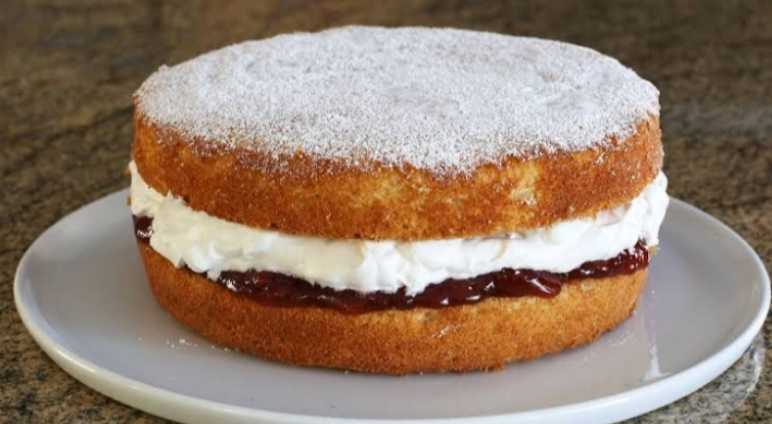Queen Cake

Queen Elizabeth cake is a dessert cake prepared with sugar, flour, dates, eggs, and butter, and topped with a sugary icing infused with shredded coconut. Queen cake is similar to the famous Victoria sponge which was named after Britain’s Queen Victoria.
“Queen cake” is named after the Queen of England, Elizabeth II. It is a popular cake in North America. The coconut topping is prepared by broiling or grilling. The icing is prepared using a caramel base. The dates used are chopped, and give the cake a dark coloration. Chopped walnuts or other types of nuts are sometimes used atop the cake. Queen Elizabeth cake is low in fat compared to other cakes, and has a moist consistency. It is sometimes served accompanied with tea. The cake is common at farmers markets and bake sales. It is sometimes purveyed at pastry shops in North America.
An account of Queen Elizabeth cake’s origins is that it was prepared for the coronation of Elizabeth II in 1953. During this time, food rationing still existed in Great Britain, and a cake with few ingredients was in order. Another account is that the cake was invented for the 1937 coronation of King George VI and the Queen Mother Queen Elizabeth.
Cupcake

A cupcake is a small cake designed to serve one person, which may be baked in a small thin paper or aluminum cup. As with larger cakes, frosting and other cake decorations such as fruit and candy may be applied.
This is a very simple cake and it takes less than an hour to put everything together. It’s also quite different from our everyday Cakes because it requires no icing at all. The best you can do to this cake is just to sprinkle some confectioners sugar on it and you are good to go.
A standard cupcake uses the same basic ingredients as standard-sized cakes: butter, sugar, eggs, and flour. Nearly any recipe that is suitable for a layer cake can be used to bake cupcakes. The cake batter used for cupcakes may be flavored or have other ingredients stirred in, such as raisins, berries, nuts, or chocolate chips.
Because their small size is more efficient for heat conduction, cupcakes bake much faster than a normal layered cake. During baking, the volume of the batter initially increases due to the production of carbon dioxide, then decreases upon cooling due to the release of leavening gases.
Cupcakes may be topped with frosting or other cake decorations. Elaborately decorated cupcakes may be made for special occasions.
They may be filled with frosting, fruit, or pastry cream. For bakers making a small number of filled cupcakes, this is usually accomplished by using a spoon or knife to scoop a small hole in the top of the cupcake. Another method is to just insert the pastry bag in the middle of the cupcake. In commercial bakeries, the filling may be injected using a syringe.
Cupcakes vs Queen Cakes: Key Differences
| Aspect | Cupcakes | Queen Cakes |
|---|---|---|
| Size | Generally larger, standard size is 2-3 inches in diameter. | Smaller, typically bite-sized, about 1-2 inches in diameter. |
| Shape | Traditionally, they have a domed or rounded top. | Usually flat or slightly domed tops. |
| Ingredients | Can have various flavors and ingredients, including frosting. | Typically flavored with currants or sultanas and no frosting. |
| Frosting | Often topped with frosting or icing, which can be decorative. | Rarely frosted, if at all. |
| Texture | Typically denser and moister due to the added moisture from frosting. | Lighter and drier in texture. |
| Presentation | Often presented in individual paper liners and decorative wrappers. | Usually served without liners. |
| Flavor Variations | Available in a wide range of flavors and fillings. | Traditionally flavored with currants or sultanas. |
| Serving Occasions | Commonly served at birthdays, celebrations, and events. | Often served with tea or as a snack. |
| Decorations | Can be elaborately decorated with sprinkles, fondant, or edible decorations. | Simple in appearance, with a sprinkle of sugar on top. |
| Historical Background | Originated in the United States in the 19th century. | Originated in the United Kingdom and have been around for centuries. |